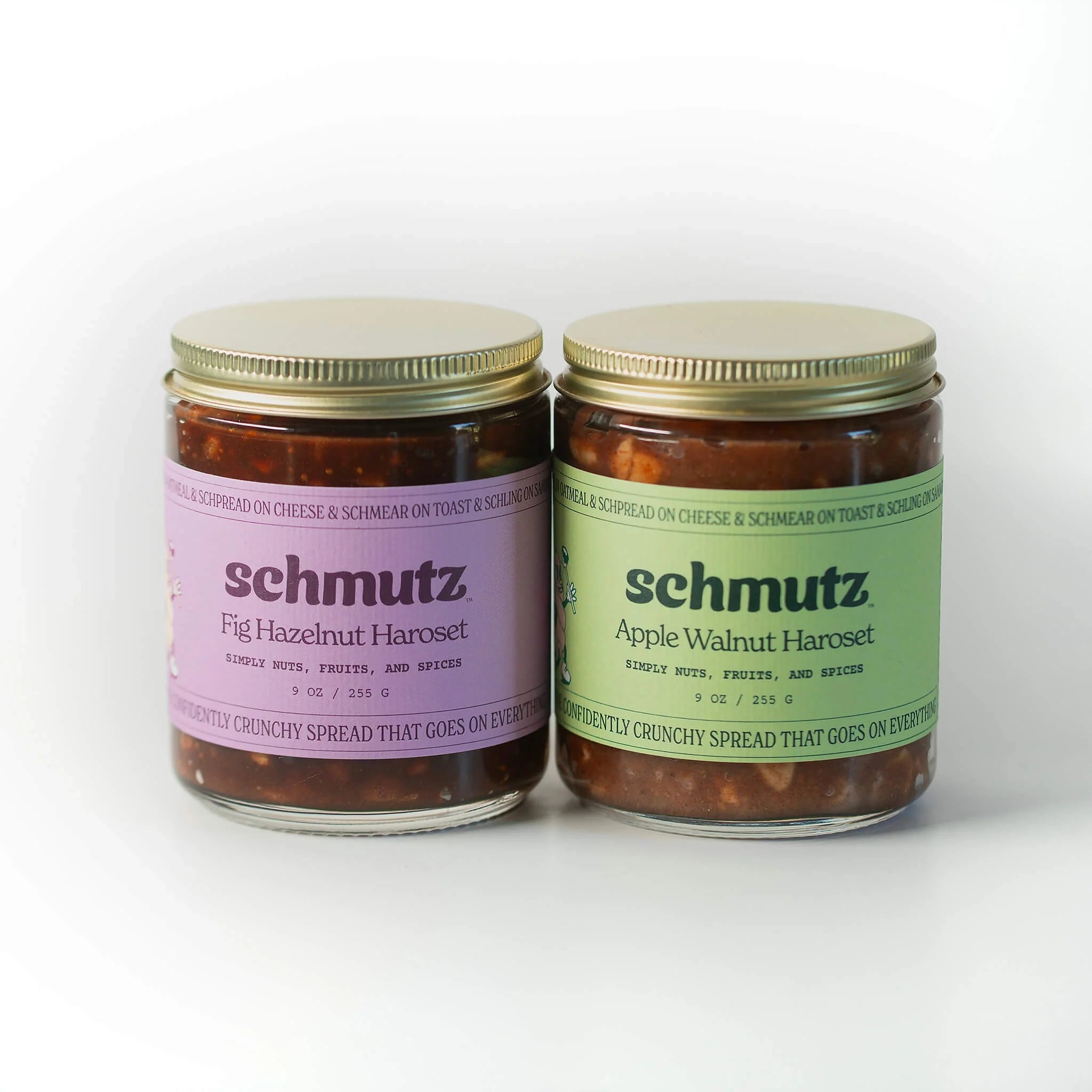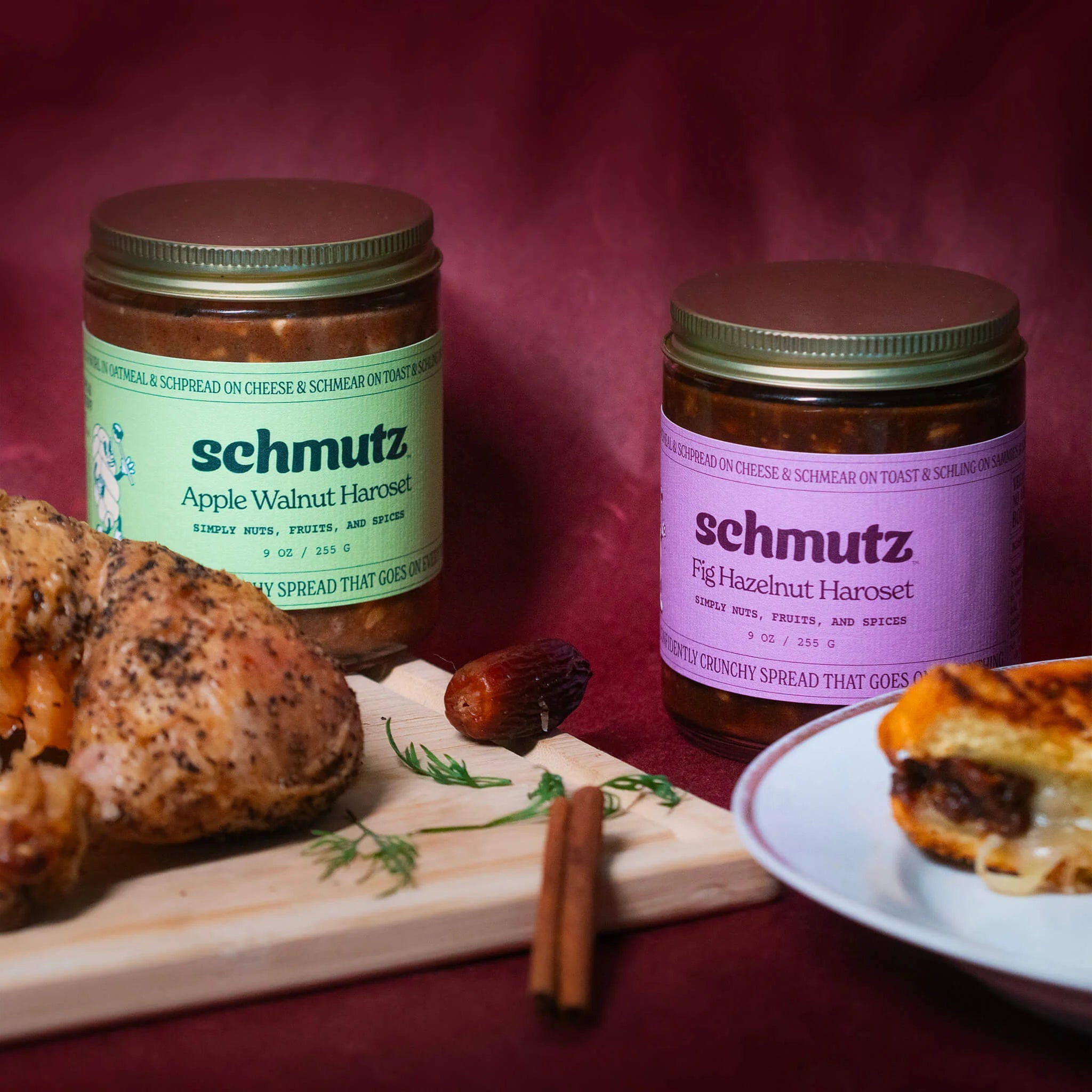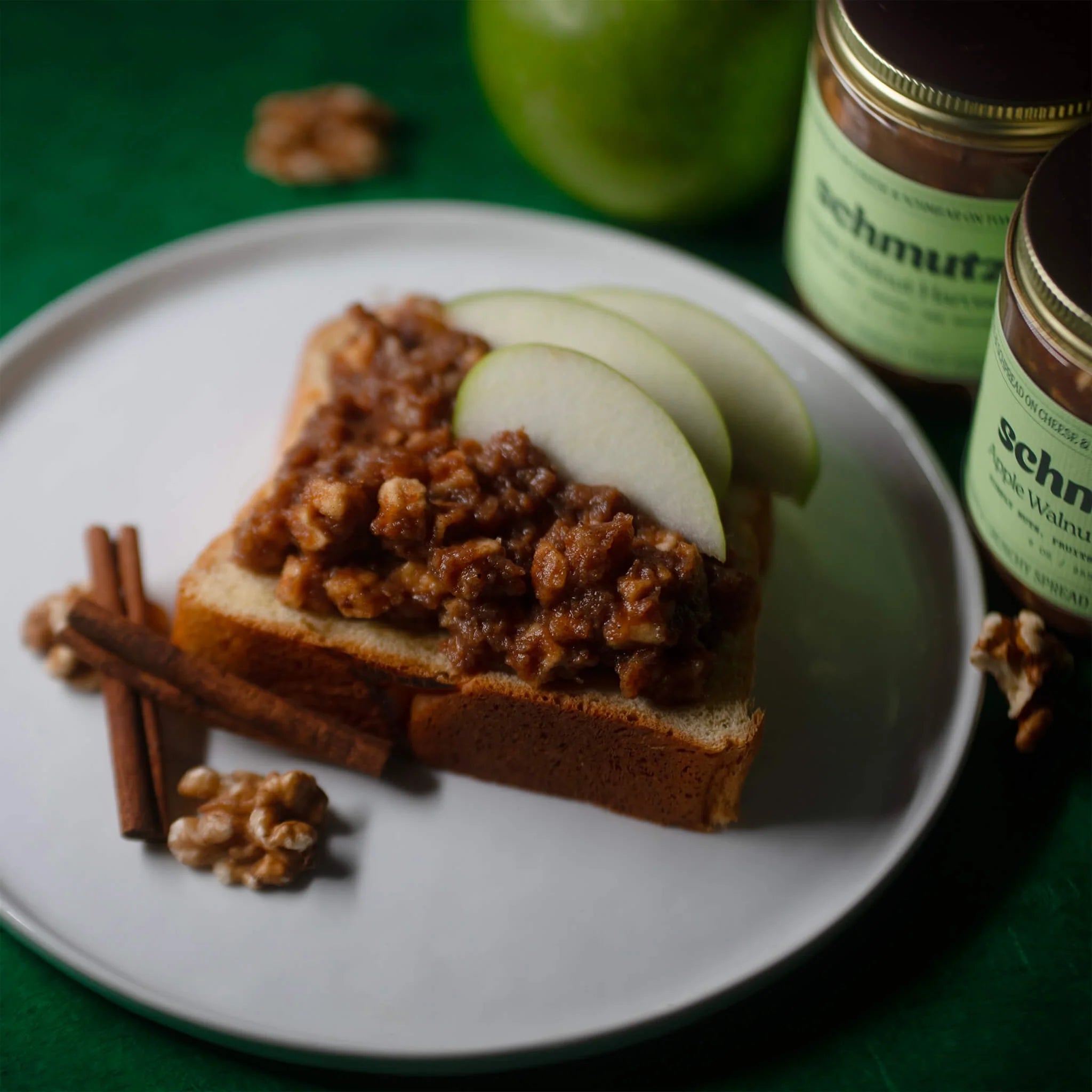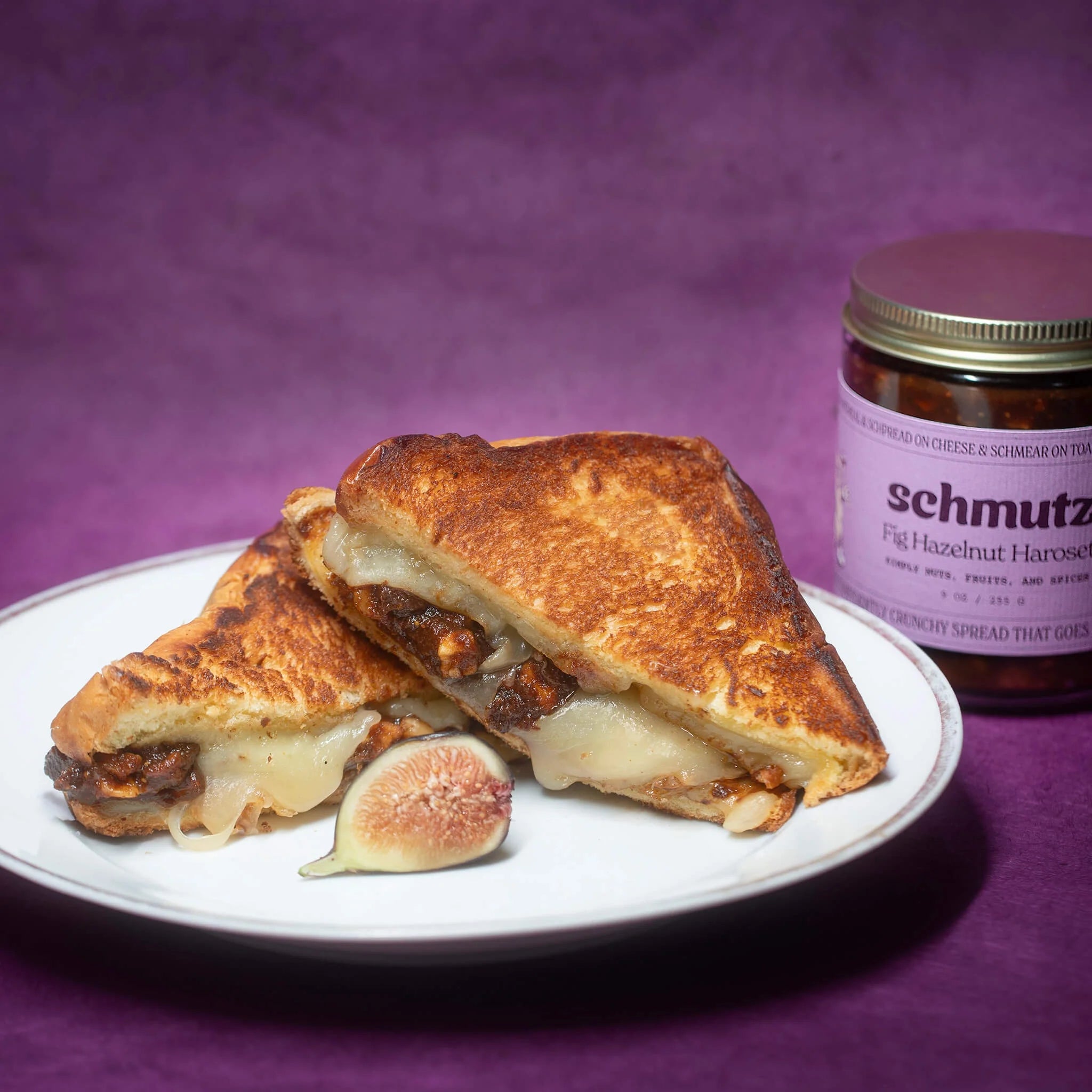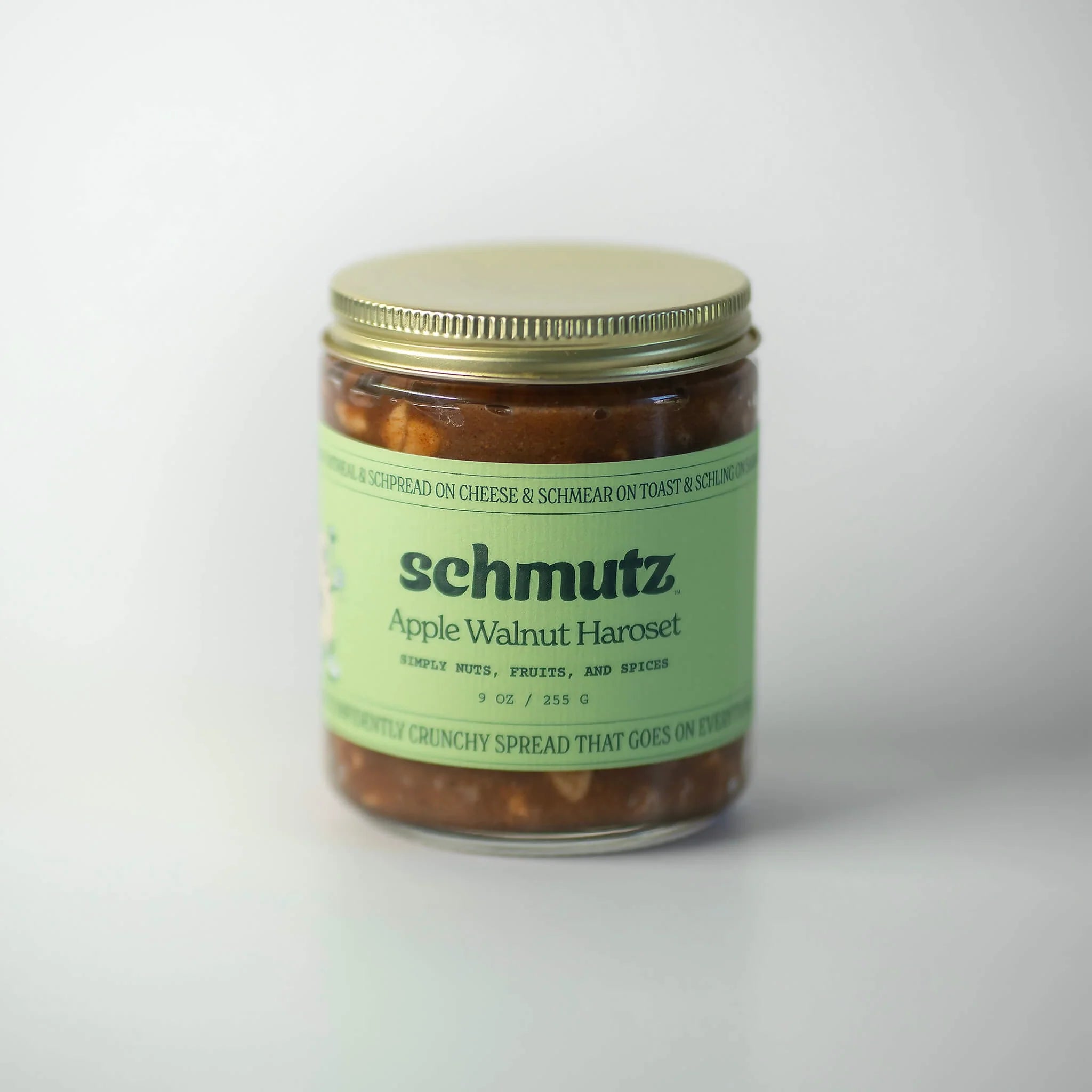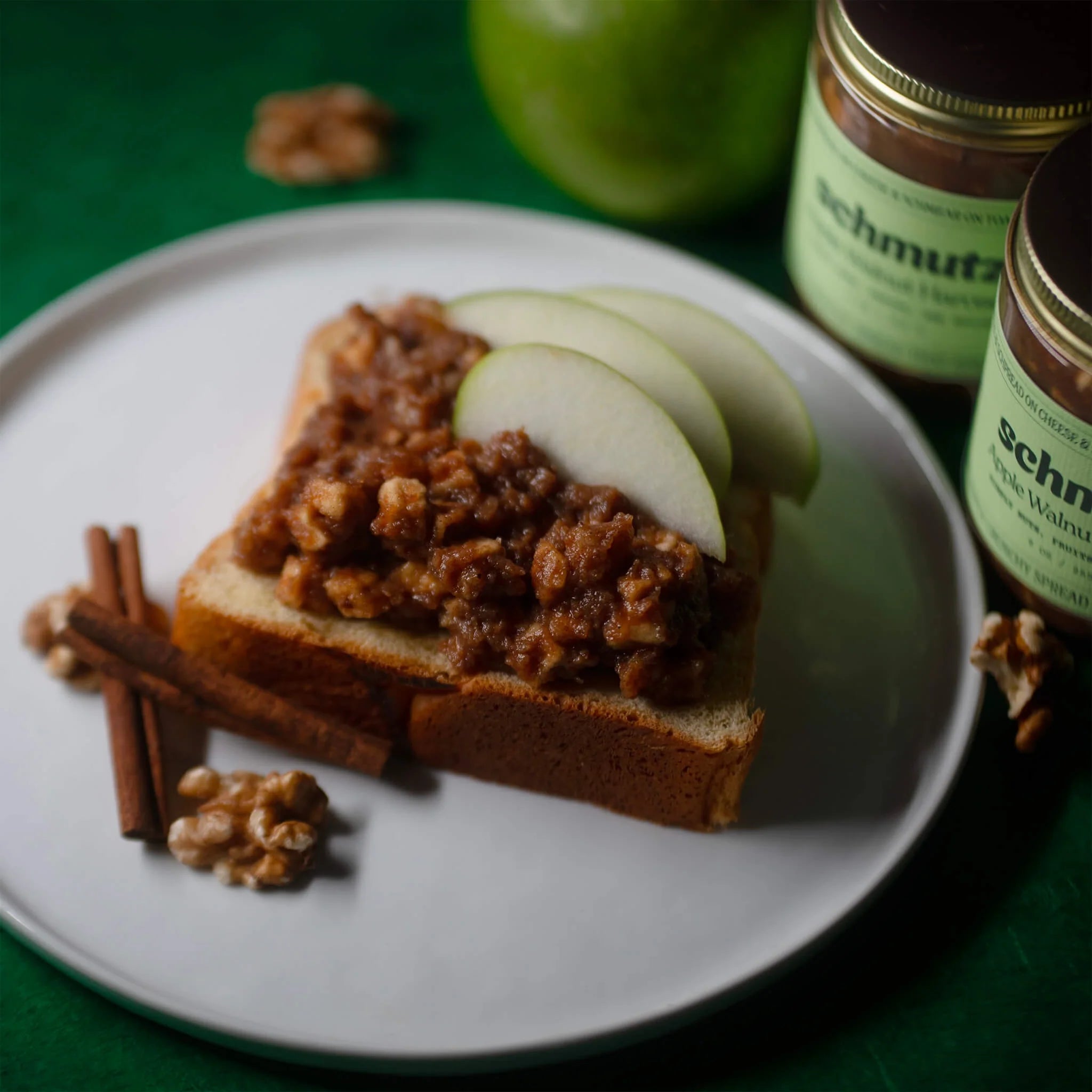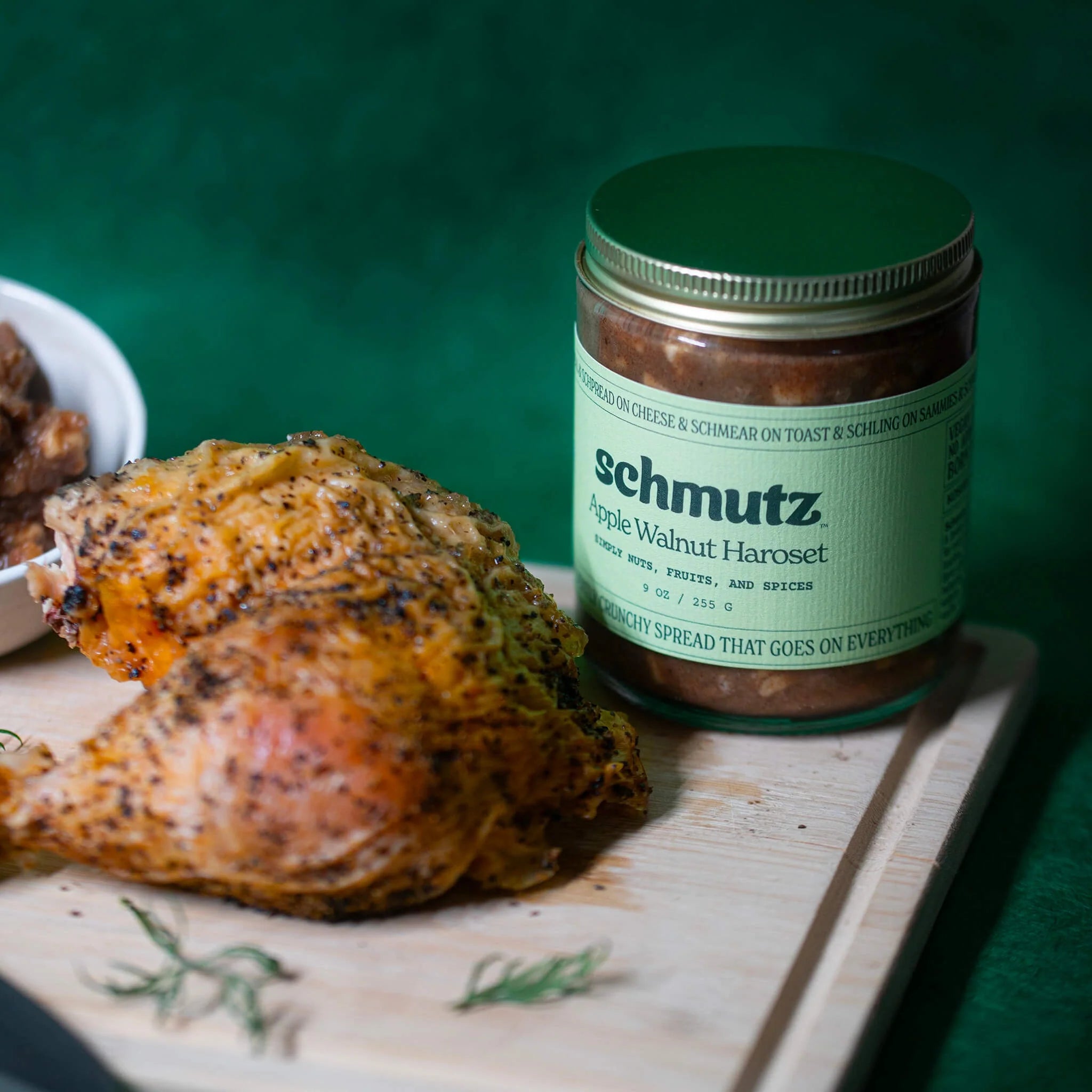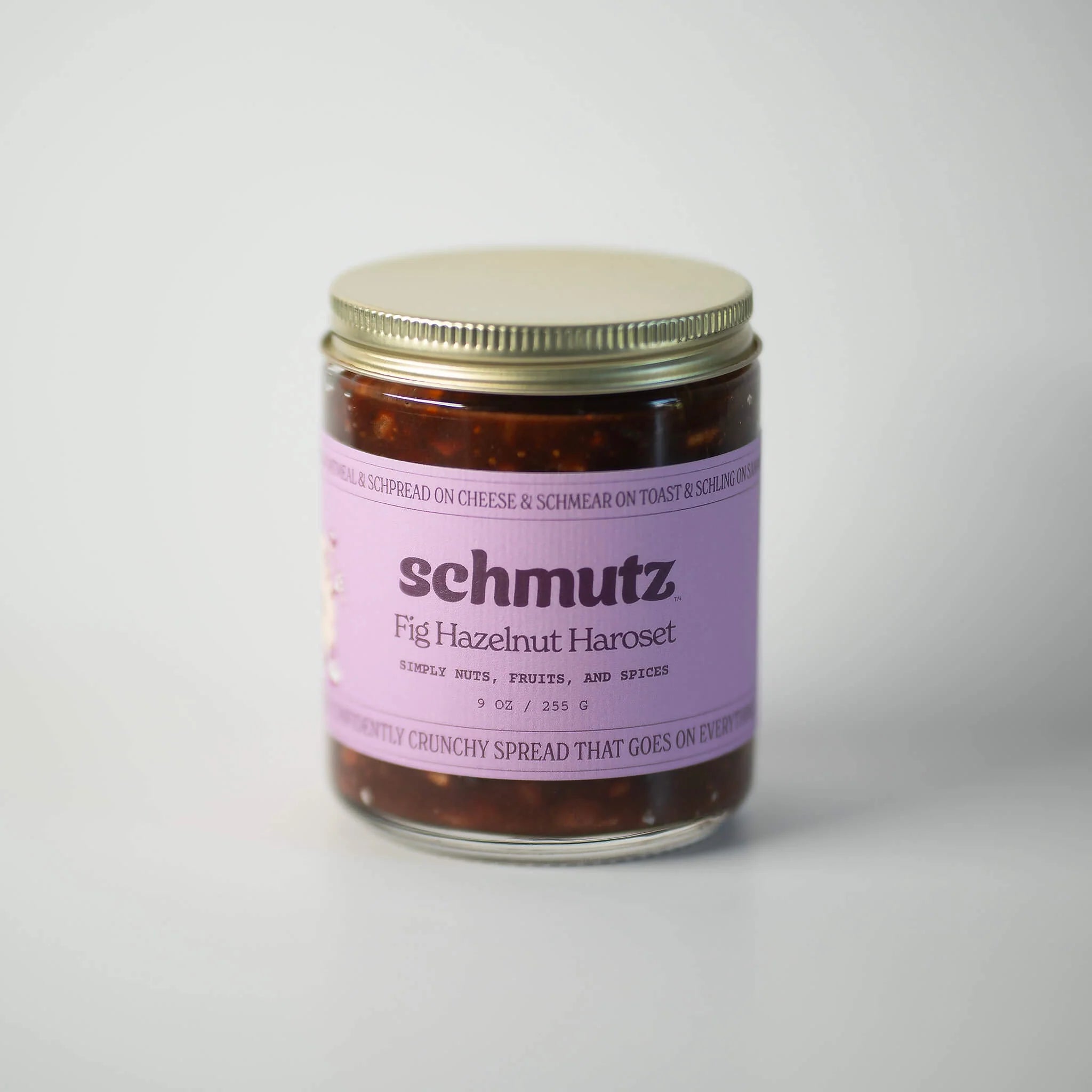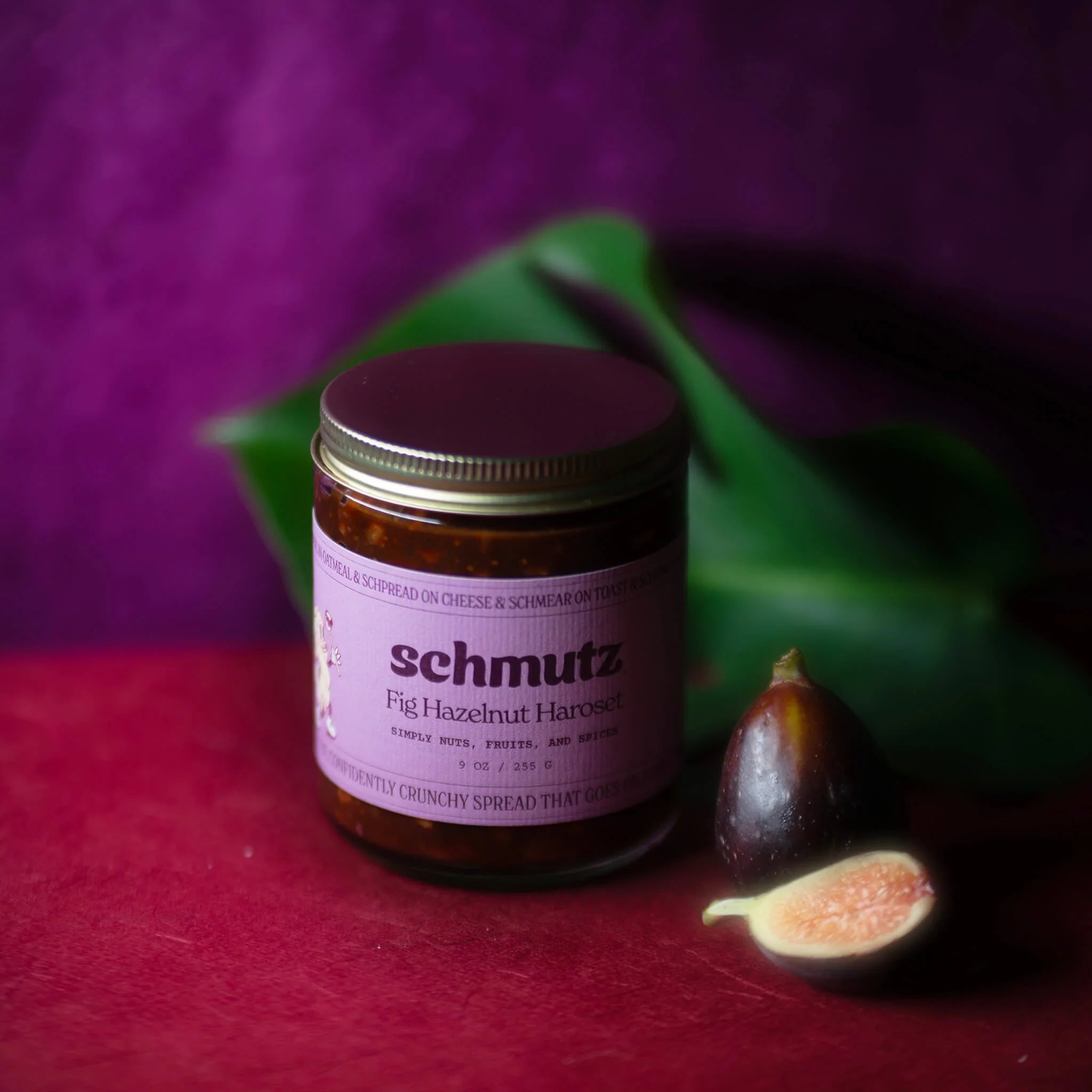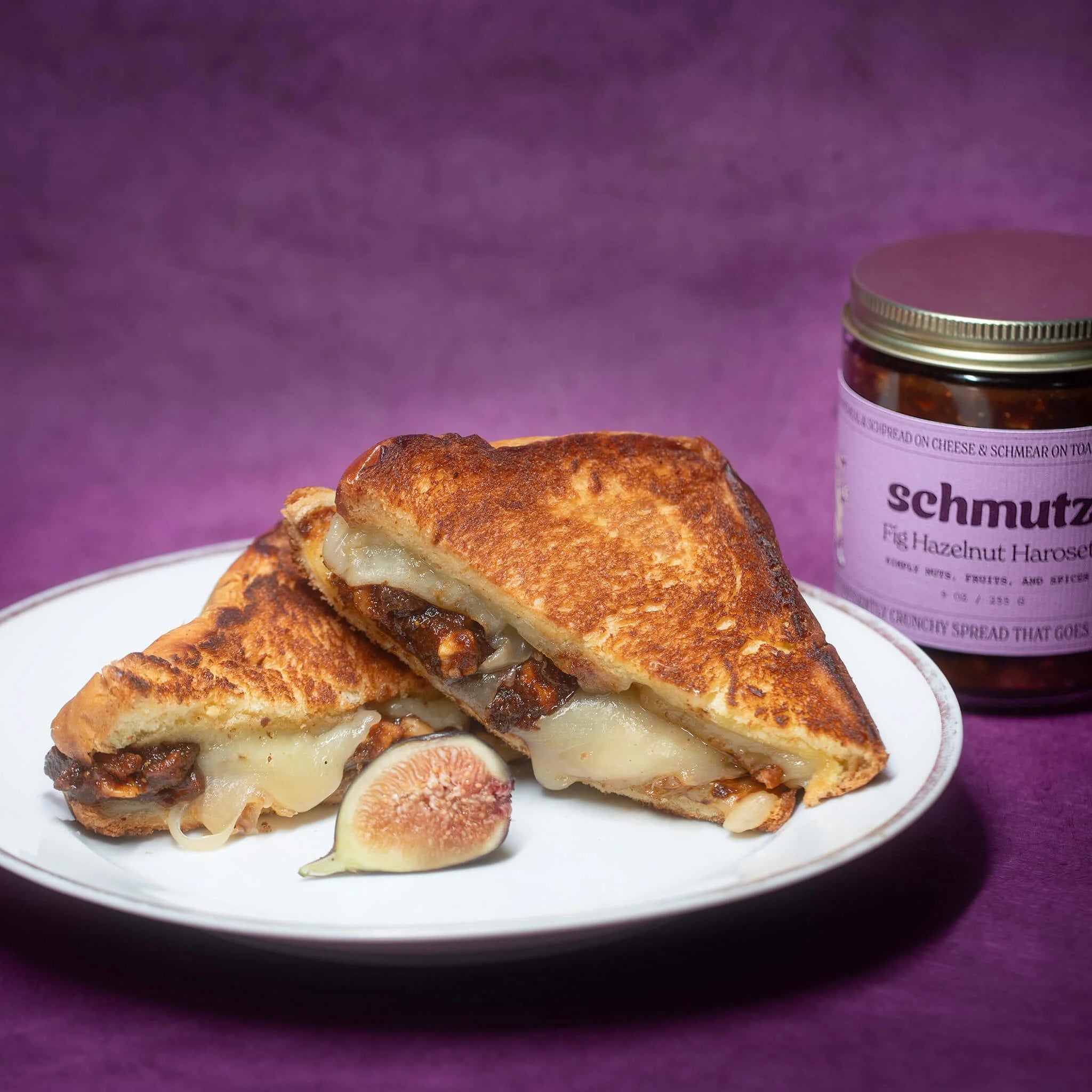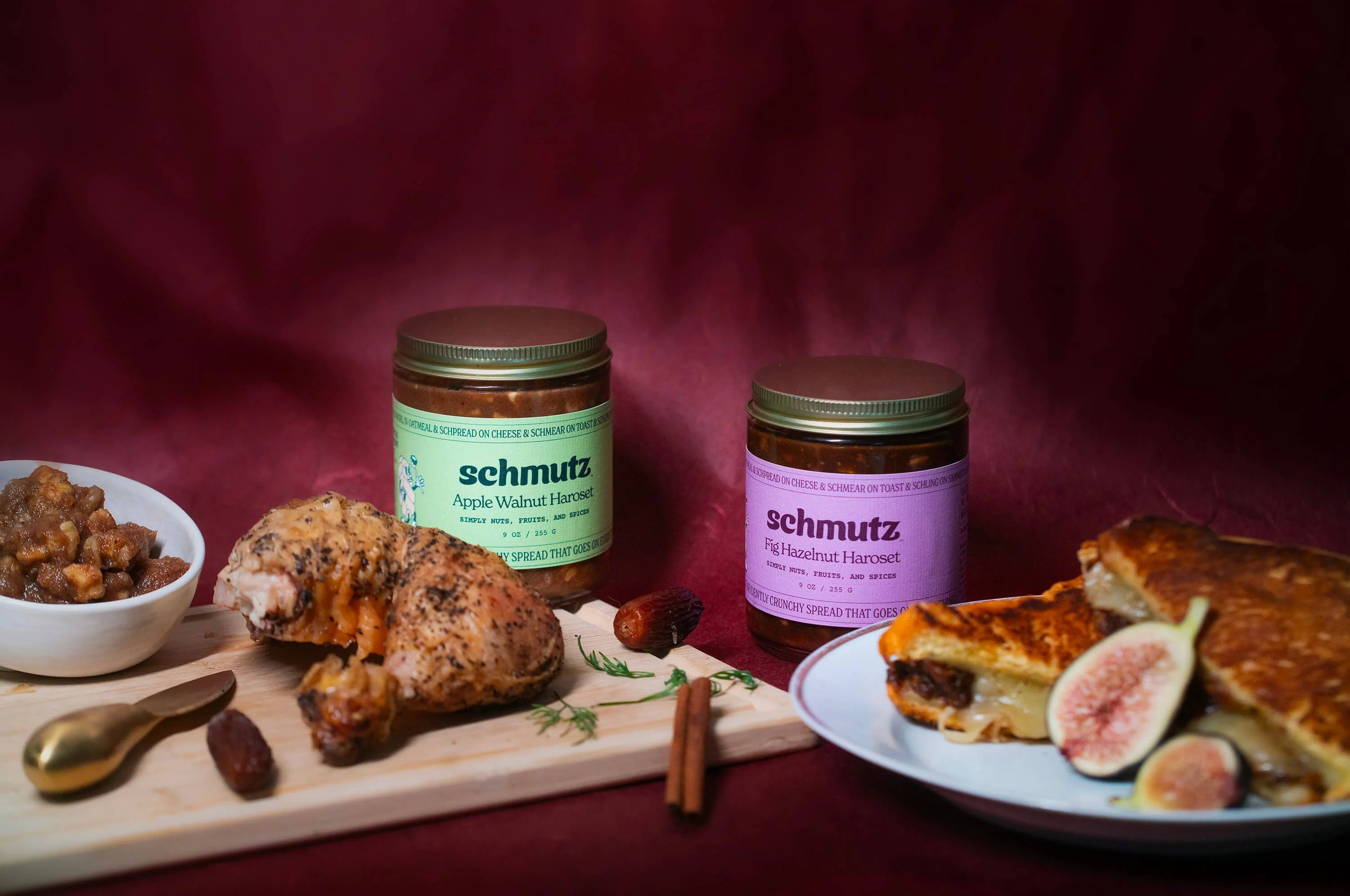“The most wonderful time of the year”
“Tis the season”
We all know that beautiful moment each year when families gather round each year to tell stories and share food.
Of course, we’re talking about Passover. The story to tell is the Exodus story, in which the Israelites make their way out of slavery and out of Egypt. As for food, the Passover dinner — called the seder — is full of symbolic dishes, each one representing a different element of the Passover story.
One of those foods: haroset.
WHAT IS HAROSET?
Haroset (also spelled charoset) is a sweet blend of fruits, nuts, and spices. Haroset is meant to resemble the mortar that ancient Israelites used to build the pyramids in Egypt.
Haroset’s sweetness also offers a much-needed needed counterpart to another seder food: a bitter herb (often horseradish) meant to represent the bitterness of slavery.
As is often true in Jewish cuisine, haroset may actually be a Jewish spin on a non-Jewish delicacy of one-time neighbors in the diaspora. At social dinners called “symposiums,” Greeks and Romans dipped food into mixtures of pounded nuts and spices. Some historians believe that Jewish people in the first century borrowed the practice for annual Passover dinners.
In the Talmud, the central text of Jewish law in the diaspora, the ancient rabbis even argued over whether haroset is a required part of the Passover seder. Still, as the Jewish diaspora moved around the world, communities brought this sweet custom with them — reinventing it along the way.
HAROSET RECIPES AROUND THE WORLD
An old joke: “ask two Jews, get three opinions.”
In the Talmud, the central text of Jewish law in the diaspora, the ancient rabbis even argued over whether haroset is a required part of the Passover seder.
And you’ll get just as much disagreement if you ask how to make haroset. Haroset usually contains fruits, nuts, and spices, but the exact recipe depends on which Jew you ask… and where exactly they’re from.
That’s because, over the centuries, Jewish communities across the globe have crafted very different types of haroset — based on locally available ingredients and neighboring cuisines.
Ashkenazi Jews, who hail from Eastern Europe and make up two-thirds of the American Jewish population, make a chunky haroset — usually with chopped apples, walnuts, cinnamon, and sweet red wine.
Sephardic Jews, with origins in Spain and Portugal, have crafted a wide range of haroset recipes, often a smooth paste of almonds and dried fruits like dates, figs, apricots, or raisins.
The list goes on. Indian Jews stir chopped walnuts into a smooth date syrup for their haroset, while Surinamese Jews, who arrived in the Tropics after the Spanish Inquisition, incorporate fruits like coconuts and the pitanga, a tart, peppery berry local to the region. And of course, even recipes in a given area are far from homogenous. Italian Jews in Piedmont have historically used chestnuts in haroset, while Jews in Venice prefer pine nuts.
Haroset spices vary, too. In Yemen, you might find savory spices like coriander and black pepper, while Persian recipes sometimes incorporate a more delicate rosewater.
While haroset is meant to resemble a mortar-like paste, some recipes across the diaspora are so thick that they’re rolled into small balls. One recipe for a peanut- and banana-based Jamaican haroset is rolled in cinnamon, not unlike chocolate truffles.
What’s clear: Haroset variations are as diverse as Jews themselves, and asking what goes into haroset is sort of like asking what goes on a sandwich. There’s a basic template, but near infinite possibility.
MODERN HAROSET RECIPES
Haroset’s history is a history of remixes — and that history is by no means over. Chefs and home cooks continue to reinvent haroset every year.
Take Michael Twitty, a Jewish chef and historian who works at the intersection of African-American and Jewish cuisine. In 2015, he shared his spin on haroset, which incorporates sorghum molasses and pecans to reflect how Black Americans have “married the gifts of Africa with the bounty of America to build a new culture of sweetness and strength.”
Another recipe from Israeli-American chef Michael Solomonov balances the sweetness of haroset with more savory ingredients like carrots cilantro.
Sometimes home cooks just make do in the face of a challenge: The rise in allergy awareness has created a wave of nut-free haroset recipes relying on such substitutions as sunflower seeds and coconuts.
And, of course, other chefs are simply giving new life to old haroset recipes. For a Christmas cookie tin collab with Brooklyn’s “Jew-ish” restaurant Gertie, baker Dave Dreifus used his grandfather’s walnut-raisin haroset as a filling in rugelach, the classic Ashkenazi rolled crescent cookie.
ONCE A YEAR JUST AIN'T ENOUGH
We think that Chef Dreifus’s haroset-filled rugelach are onto something. Haroset has been an annual Passover tradition since Roman times, but it’s just too good to eat just once a year.
That’s why Schmutz is serving up the first everyday haroset: a spreadable, snackable haroset that’s good on just about everything.
Our first flavor drop is coming soon: Fig & Pistachio. It’s perfect to dollop on oatmeal, schmear on a slice of challah, or top on ice cream. Join the waitlist to get first dibs and 10% off your first order.
